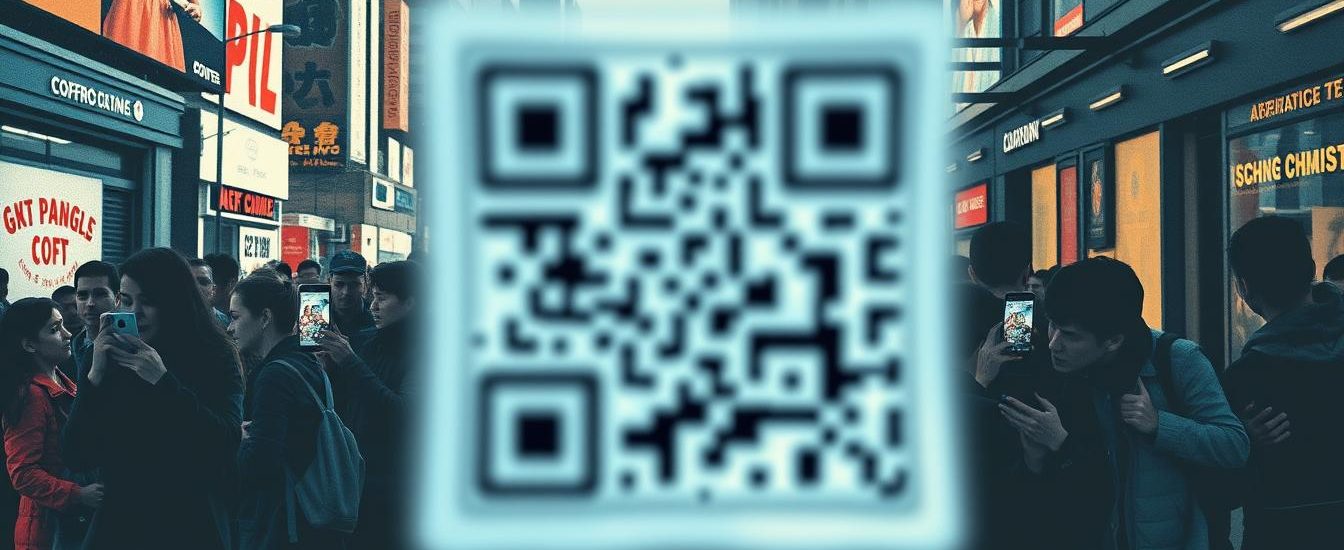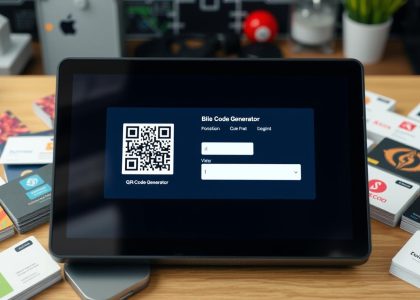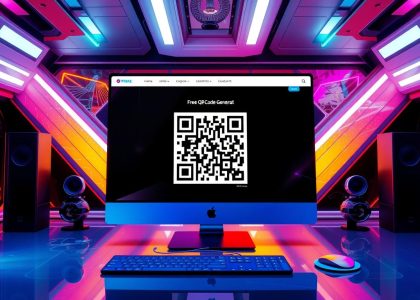Quick Response (QR) codes are everywhere in our world today. They change how we use digital content. From shopping to health, these codes are key in many fields. But, they’re not perfect. Let’s look at what’s wrong with QR codes and how it affects everyone.
Key Takeaways
- QR codes have limitations in terms of scanning distance and device compatibility
- Environmental factors can affect the performance and reliability of QR codes
- Security vulnerabilities in QR code systems can expose users to data privacy risks
- Accessibility challenges may hinder adoption for certain user groups
- QR code implementation can incur significant costs for businesses
Understanding QR Code Technology Basics
QR code technology has changed how we use digital info. These two-dimensional barcodes are everywhere, from product labels to ads. But, how do QR codes work, and what types are there?
How QR Codes Actually Work
QR codes are a special kind of barcode that can hold lots of info. They can store website links or contact details. When scanned with a phone camera or app, the info is shown right away.
This tech makes getting to digital stuff easy. It’s a big step forward in how we use technology.
Different Types of QR Codes Available
- Static QR Codes: These have fixed info that doesn’t change when scanned.
- Dynamic QR Codes: These can have their info updated, so businesses can change what’s linked to the code.
- Customized QR Codes: These have unique designs or logos, making them more eye-catching and branded.
Evolution of QR Code Usage
QR codes started in Japan in the 1990s and now are used worldwide. They’re in mobile payments, event tickets, and even menus. QR codes have made sharing and accessing info easier and more versatile.
What is the one disadvantage of using QR code?
QR codes are popular for easy access to digital content. But, they have a big drawback – they need smartphone cameras and internet. This can be a problem for some people and situations, making QR codes less common.
QR codes work only with smartphones and internet. This is tough for those without smartphones or internet, like the elderly or those in poor areas. It also makes it hard for people who can’t use technology well.
| Disadvantage | Impact |
|---|---|
| Dependence on Smartphones and Internet | Excludes users without compatible devices or reliable connectivity |
| Accessibility Challenges | Difficult for visually impaired or technologically-challenged individuals |
| Limited Functionality Offline | QR codes cannot be used without an internet connection |
Also, QR codes are hard for people with vision problems or those who find tech hard. This makes QR codes less useful for everyone.
The big problem with QR codes is they need special devices and internet. This keeps some people from using them, making QR codes less useful for everyone.
“The reliance on smartphone cameras and internet connectivity can be a significant drawback for the widespread adoption of QR codes, particularly in underserved communities and for users with accessibility needs.”
Technical Limitations of QR Code Implementation
QR codes are everywhere today, but they have their limits. Scanning distance, device compatibility, and environmental factors can make using them tricky. These issues can make implementing QR codes a complex task.
Scanning Distance Constraints
QR codes need to be scanned from a certain distance. This distance is usually between 4 to 10 inches. This can be a problem in real life, as it’s hard to always be at the right distance.
Device Compatibility Issues
Not all devices can handle QR codes well. Older devices might not have the right tech to scan them properly. This can make it hard for users to use QR code content.
Environmental Factors Affecting Performance
QR codes can also be affected by their surroundings. Things like lighting, surface quality, and nearby objects can make them harder to read. This can lead to problems with how well QR codes work.
| Limitation | Description | Impact on QR Code Performance |
|---|---|---|
| Scanning Distance | QR codes require a specific range (4-10 inches) for successful scanning | Limits user convenience and can lead to frustration if the optimal distance is not maintained |
| Device Compatibility | Not all devices have the necessary hardware and software to reliably scan QR codes | Reduces the potential audience and accessibility of QR code-enabled content |
| Environmental Factors | Lighting conditions, surface quality, and interference from nearby objects can affect QR code readability | Compromises the overall performance and user experience of QR code-based interactions |
These limits show we need to think carefully before using QR codes. By tackling these issues, we can make QR codes work better. This will give users a better experience.
Security Vulnerabilities in QR Code Systems
QR codes are everywhere in our digital world, but they also come with QR code security risks. These barcodes link physical things to digital content. But, they can also put users at risk of cyber threats.
One big QR code security risk is malware. Bad actors can make QR codes that harm your device. They might take your data or money without you knowing.
QR codes can also be used for phishing. Scammers make fake QR codes to trick you into giving out personal info. This can hurt your privacy and security a lot.
Also, QR codes can track you. Once scanned, they can follow your actions and data. This is a big privacy risk.
“The convenience of QR codes comes with a price – the risk of compromising personal data and security.”
To stay safe from QR code security risks, be careful. Check who made the QR code and only scan trusted ones. Also, think about what info you share.
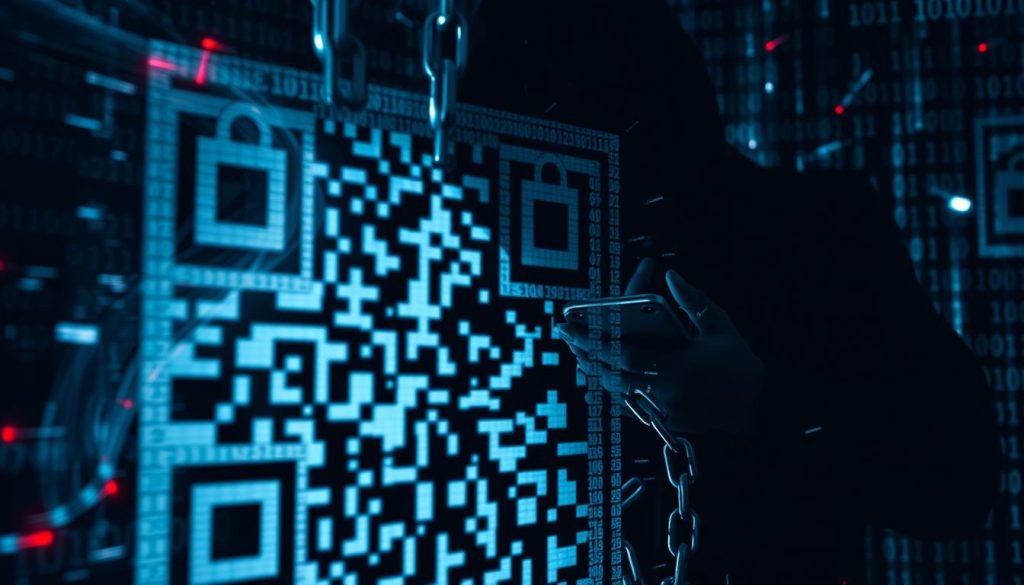
As QR codes get more common, we need to fix these security issues. Users and tech companies must be careful and use QR codes wisely. This way, we can all have a safer online world.
Privacy Concerns and Data Collection Risks
QR codes are becoming more popular, but they raise privacy worries. They can collect personal info, leading to tracking and data storage problems. It’s important to tackle these issues to use QR codes safely and responsibly.
Personal Information Exposure
Scanning a QR code might share personal details like location or login info. This data can go to the QR code creator or linked services. It could lead to identity theft or unwanted ads.
Third-Party Tracking Issues
- QR codes can track what you do online, like what you buy or browse. This data can be shared without your say-so.
- This sharing can make users feel like they have no control over their info. It raises questions about who gets to see it.
Data Storage Concerns
Data from QR codes might be kept forever, which is a big worry. Users might not know how their info is used or protected. This could lead to privacy breaches and misuse of personal data.
| Key Privacy Concerns with QR Codes | Potential Impact |
|---|---|
| Personal Information Exposure | Identity theft, targeted advertising, privacy invasion |
| Third-Party Tracking Issues | Lack of transparency and control over personal data |
| Data Storage Concerns | Security risks and potential misuse of personal information |
As QR codes become more common, it’s key to know the privacy risks. Service providers must protect user data well. By fixing these issues, QR codes can be used in a way that respects privacy and builds trust.
Accessibility Challenges for Different User Groups
QR codes are popular, but they create big problems for many people. This part talks about the issues older adults, people with disabilities, and those without smartphones or internet face with QR codes.
Challenges for Older Adults
Older adults find QR codes hard to scan because they are small and detailed. They also struggle with smartphones, which they may not be used to. Visual and dexterity problems make it even harder for them to use QR code accessibility.
Accessibility Hurdles for Individuals with Disabilities
- People with visual impairments find it hard to spot and scan QR codes.
- Those with motor disabilities struggle to hold their device steady for scanning.
- Individuals with cognitive or learning disabilities may not understand QR codes well.
Limitations for Those Without Smartphones or Internet Access
Many people, especially in poor areas, don’t have smartphones or internet. This makes it hard for them to use QR code accessibility.
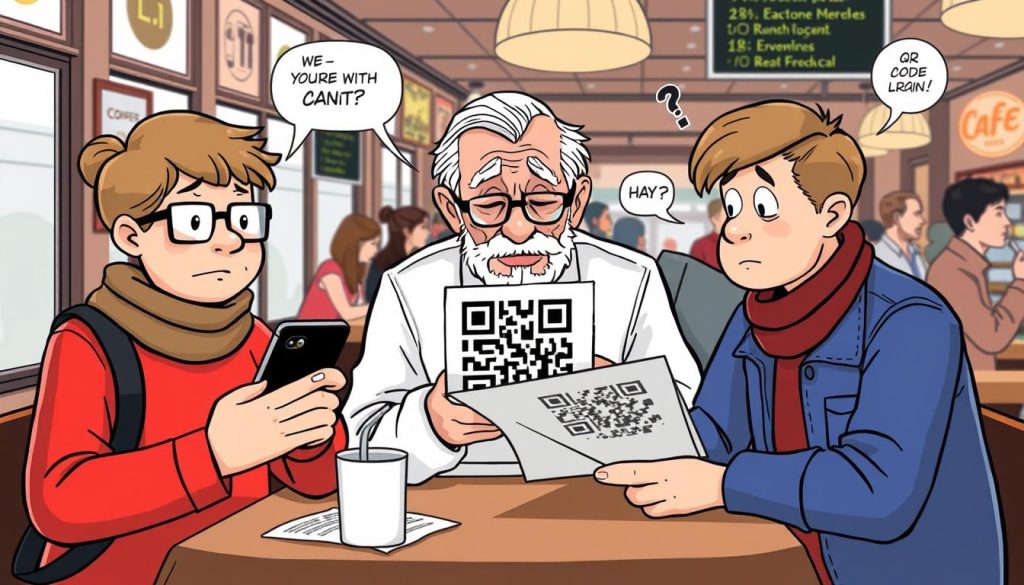
As QR codes become more common, it’s important to think about everyone’s needs. Businesses and tech companies should make QR codes easier for everyone to use. This way, everyone can enjoy the benefits of QR codes.
Cost Implications for Business Implementation
Adding QR code technology to a business can be pricey. Costs include setup, ongoing upkeep, and training. Knowing these costs is key for companies thinking about using QR codes.
Initial Setup Expenses
Companies starting with QR codes will need to spend on hardware and software. This includes QR code scanners, high-quality prints, and system integration. The costs depend on the project’s size and complexity.
Ongoing Maintenance Costs
Keeping a QR code system running requires ongoing spending. Companies need to budget for software updates, server costs, and possible system upgrades. They also need to plan for regular checks and fixes to keep things working smoothly.
Training and Support Requirements
QR code success needs training and support for employees and customers. Businesses must teach their staff how to use the system and offer customer help. These costs are a big part of the QR code implementation costs.
Understanding the financial side of QR codes helps businesses plan better. This way, they can make smart choices and use their resources wisely for a successful QR code rollout.
User Experience and Adoption Barriers
QR codes make it easy to connect the digital and physical worlds. Yet, they face some challenges that slow down their use. One big issue is that some people don’t know how to use them.
Another problem is that you often need special apps to read QR codes. This can be annoying for those who want a simple experience. If QR codes are not clear or well-made, it can confuse users and lower their use.
- Learning curve for unfamiliar users
- Requirement for dedicated QR code scanning apps
- Poorly designed QR code implementations
To beat these QR code adoption barriers, we need to make them easier to use. Businesses and developers should aim to make QR code scanning a part of everyday apps. They should also give clear instructions and make sure QR codes work well everywhere.
| Adoption Barrier | Impact on User Experience | Potential Solutions |
|---|---|---|
| Learning Curve | Confusion and hesitation for unfamiliar users | Provide clear instructions and educational resources |
| Dedicated Scanning Apps | Additional steps and friction in the user experience | Integrate QR code scanning directly into mobile operating systems |
| Poor Implementation | Frustration and reduced trust in the technology | Ensure consistent, high-quality QR code design and placement |
By tackling these QR code adoption barriers, we can make using QR codes smoother and more fun. This will help more people use this powerful tool.
Design and Aesthetic Limitations
QR codes are everywhere in our digital world. But, they can be tough to fit into designs and brand identities. The design limits of QR codes often clash with marketing plans and aesthetics.
Visual Integration Challenges
Putting QR codes into marketing stuff, packaging, or spaces is hard. Their square look can mess with a brand’s design. It’s hard to add QR codes without ruining the brand’s look.
Brand Identity Conflicts
Keeping a brand’s look consistent is key. But, QR codes can mess with this. Their simple, one-color design doesn’t match the bright colors and patterns many brands use. This can make customers feel out of place.
To fix these issues, companies need new ways to make QR codes fit better. They might change QR code designs, play with sizes, or find smart ways to blend them into their brand’s look.
By solving these design problems, companies can make their QR codes work better with their brand. This makes for a better experience for users and boosts QR code marketing.
Maintenance and Update Requirements
Keeping a QR code system running smoothly is more than just setting it up. Businesses need to handle updates, manage links, and deal with broken codes. It’s important to check and update the info linked to QR codes often. This keeps them useful and effective.
Since digital content changes a lot, QR codes need regular checks and updates. When websites or promotions change, the QR codes must link to the new info. Not updating QR codes can make them useless and harm the system’s purpose.
Also, businesses should watch over their QR codes as they age. Codes can get damaged or replaced, leading to old or broken ones. Keeping a list of active QR codes and checking them often helps avoid these problems. This ensures a smooth experience for customers.


